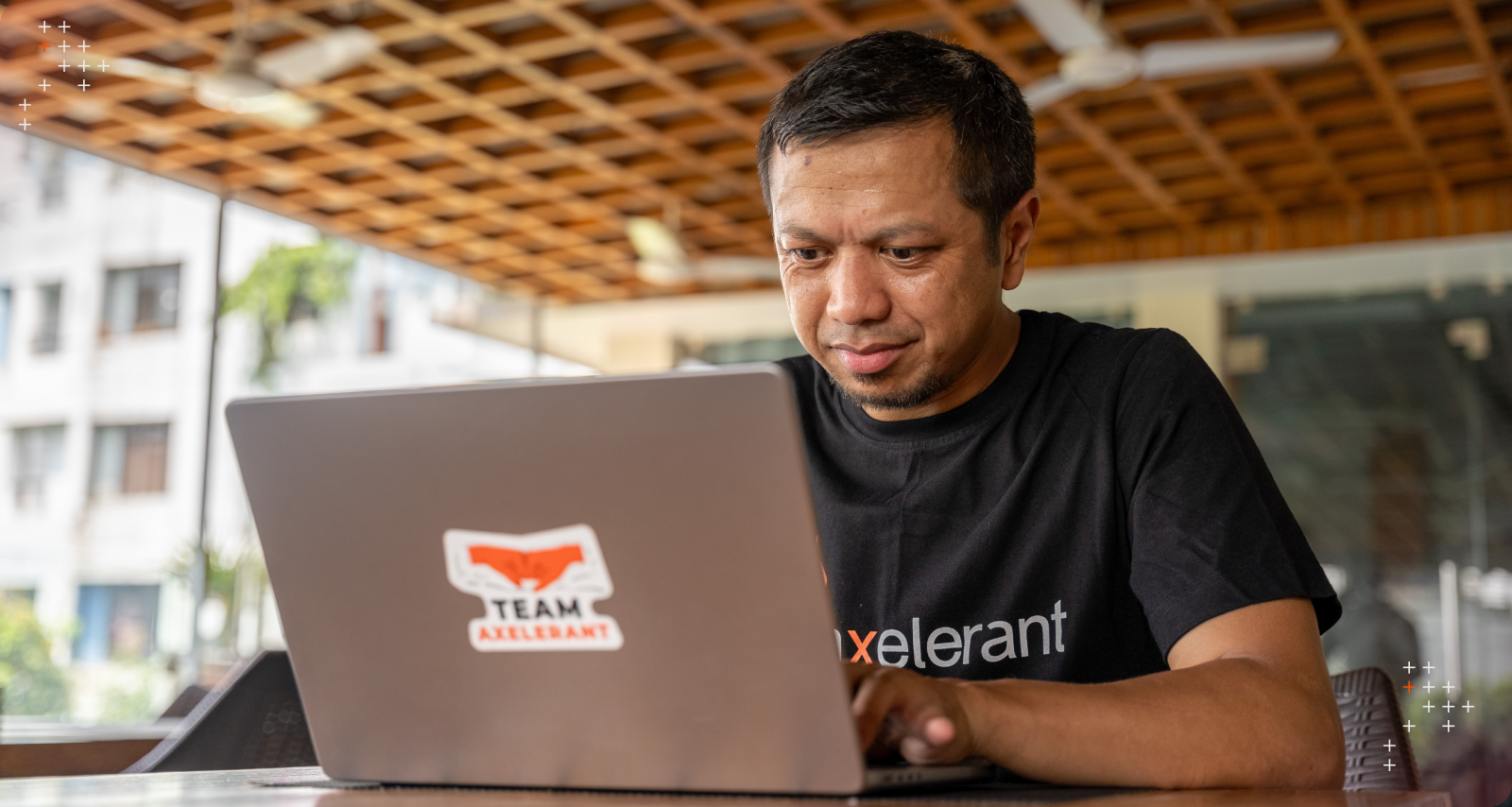Introduction
The third edition of Decoupled Days is just around the corner—scheduled for July 17-18, 2019 at the John Jay College of Criminal Justice in New York.
Focused on headless content management system (CMS) technologies, Decoupled Days began as a primarily developer-focused conference. This time, however, the organizers are segueing into a more business-focused approach, with a dedicated CXO track planned for this year’s conference.
Why are we attending the event?
Last year, we had one session selected, by Prateek Jain on headless commerce chatbots.
This year, we have three more sessions selected, and we’re a Silver sponsor.
Thank you, @axelerant, Silver sponsor for #DecoupledDays #DecoupledDays2019
— Decoupled Days • July 14-15, 2021 🗽 (@decoupleddays) July 13, 2019
Axelerant fuels #digital experiences with #agency affiliates as the integrated global delivery partner.
There's still time to get tickets! https://t.co/LZ3U7tCefT pic.twitter.com/3pR7mN2LRR
We’re a well recognized brand in the decoupled space. Delivering complex decoupled solutions is one of our USPs.
Over the last few years, we’ve delivered multiple decoupled projects, solving the lack of capability problem in a short period and delivering in record time. The engagements that we have delivered have been significantly large and have featured projects that have had high value.
There aren’t many providers who can boast of successful large projects as we have. We want to share how we did this, talking openly about the challenges we faced and how we solved them.
Getting this right is important to us.
This is not one of those things we do “as well”. This is way more important to us. We are uniquely positioned to offer agencies support with their decoupled deployments.
Large agencies need the capability to deliver decoupled solutions because of the nature of the organizations they work with—usually enterprises and complex organizations. But often, they may not have decoupled implementation expertise right away.
That’s when they can look to a partner agency to help them bring in that practice reliably.
But it’s important to choose the right partner. In our experience, it’s also common for providers to take on projects, but not have the capabilities to actually deliver. This puts the client at risk. This is what happened on one of our engagements, before we were called in to support the client in place of a vendor that backed out at the last minute.
This is exactly why it’s important for agencies to work with a more reliable, trustworthy partner who has the capability to scale up according to their needs. The decoupled space might be new and challenging, and agencies may not immediately have the appropriate capabilities and bandwidth—but the right implementation partner can help them plan the delivery, ramp up and deliver in a phased manner.
What are our team members doing at the event?
We’re presenting a mix of technical and business sessions, with the aim of sharing our knowledge and experiences both with those interested in learning more about these technical approaches as well as Project Managers and Sales and Marketing professionals who would like to know more about the use cases for complex decoupled projects.
 |
Hussain Abbas, Engineering ManagerBuild infrastructure for a multi-site Decoupled Drupal solution using TerraformIndustry track: Decoupled Drupal |
While hosting a Drupal website can be a challenge, it is largely a solved problem with several PaaS providers providing optimized Drupal hosting. Even if we didn’t want to use that, there is extensive documentation around best practices in hosting a PHP application or Drupal specifically.
In a decoupled Drupal setup, we would need to even host the front-end application separately somewhere apart from Drupal. In this session, we will discuss how we hosted a “serverless” front-end application with multiple cloud providers available via a CDN while allowing it to access Drupal’s API endpoints on the edge (again with FaaS computing paradigm). We will also discuss the developer constraints, security considerations, and website performance.
Further, we will also see how such an application can be provisioned multiple times in different regions of more than one cloud providers using Terraform. We will talk about using Terraform and writing wrapper scripts for Terraform to make it easier and more consistent to deploy infrastructure. Further, we will discuss how much of this setup can be automated considering enterprise security regulations, developer effectiveness, and customizations.
In this session, you will learn:
- Plan your API contract across multiple websites in a multi-site Drupal setup.
- Architect a “serverless” solution to serve the front-end with data retrieved via an API from Drupal.
- Use Terraform to build this setup.
- Run Terraform modules using a wrapper script or even via a CI tool.
- Enterprise level security considerations such as IP whitelisting the access to Drupal server, firewall, granular access to cloud resources, etc.
 |
Bassam Ismail, Engineering ManagerTesting your front-end application to productionIndustry track: JavaScript and JAMstack |
Building a decoupled application is one half of the story before you can deploy it to production. To make sure you have a sturdy application you will have to test it on multiple fronts. You will have to tests various types of components, async operations, integration between multiple components, and a lot more.
In this example-driven session, you will learn how to drive an application from no tests to multiple unit, snapshot, and integration tests without breaking a sweat.
In this session, you will learn:
- various ways to test your components. We will be using React as an example here.
- how snapshot testing can help you keep looking at the UI every time you make a change.
- writing integration tests to make sure all the components are working with each other.
- Bonus: how type checking can help you refactor and find problems at compile time.
Attendees should have experience with ES2015 JavaScript. Familiarity with a JavaScript framework, such as React or Vue, may also be helpful.
Delivering a multi-site, multilingual decoupled Drupal project in record timeIndustry track: Business/CXO | Room: 2 | Starts at: Jul 18, 14:45pm |
|

Piyush PoddarVP Sales & Partnerships |

Bassam IsmailEngineering Manager |
Our engagement with a leading global agency—to overhauling one of their client's important project comprising of multiple websites across multiple brands—was challenging in many ways, especially since we didn't have a team familiar with the technology at the start. What we had was a prior experience of building decoupled applications, robust, agile management practice and a strong decoupled (read: remote) work culture in place.
In this session, we'll see how we scaled up and conquered these challenges to deliver the client's headless Drupal solution successfully — all within a timespan of just a few months.
We'll cover how a robust agile project methodology brought sanity to this multiple stakeholders-based engagement, along with how decoupled teams enabled parallel independent work streams based on established communication protocols.
We will also look at some of the crucial technical aspects of the project along with business case supporting them:
- Component driven architecture using Angular as a front-end
- 7-step content moderation workflow supporting multi-geography based compliance requirements
- A unique deployment architecture across multiple infrastructures ( Amazon Web Services, Alibaba Cloud) with Lambda-based proxy.
- CI pipeline built on Jenkins with Terraform used for front-end infrastructure.
- Others
|
And if you'd like to connect with us, get with Prateek, Piyush, Bassam, or Hussain, and we'll schedule a time to chat with you. |
Axelerant Editorial Team
The Axelerant Editorial Team collaborates to uncover valuable insights from within (and outside) the organization and bring them to our readers.

 We respect your privacy. Your information is safe.
We respect your privacy. Your information is safe.




Leave us a comment